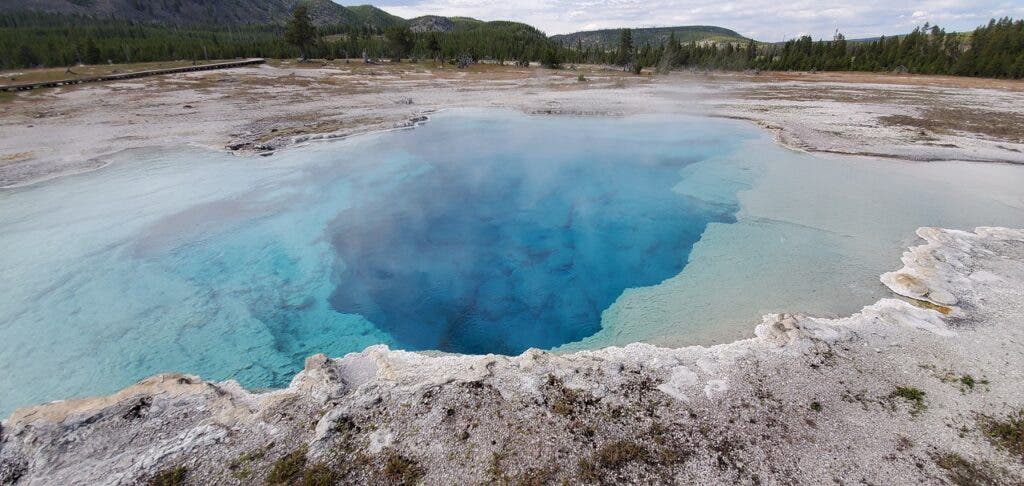You’d think some things go without saying but, well, it’s not always like that. A group of tourists in Yellowstone tried ‘cooking’ some chicken in a Yellowstone hot spring, and as you may suspect, it didn’t go too well.

Winner, winner
Yellowstone is a true wonder of nature. It’s essentially a supervolcano area where magma lies very close to the surface, heating up the rocks and water. That’s why there are hot springs in Yellowstone — because the molten hot rock heats the water.
But as cool and useful as that can be, you really don’t want to use it for cooking.
To their merit, they came prepared. Two cousins, one neighbor, and their families spent a day canoeing and hiking in one of the more remote areas of Yellowstone Park (the Shoshone Geyser Basin). But reports started coming to the ranger’s office of people hiking with “cooking pots”, says Linda Veress, a park spokeswoman.
The three men had indeed brought big pots to a remote part of the park. They were planning on using the volcanic heat to cook a meal for themselves and their friends and family in the geothermal hot springs of the Shoshone Geyser Basin, the largest backcountry geyser region in Yellowstone National Park. They even came prepared to limit contamination: they wrapped the two chicken in burlap sacks and roasting bags before dropping them into the hot spring.
They got caught before they could try out their concoction (though let’s face it, how good can boiled chicken really be?). The rangers found them and after assessing the situation, they came back with citations, fining the would-be chefs, banning them from the park, and placing them under probation after a night in jail.
Fowl play
Unsurprisingly, cooking in Yellowstone is illegal in several ways. For starters, it’s illegal to go off trails in Yellowstone (and many other national parks). You shouldn’t venture into remote areas. Throwing stuff into hydrothermal springs is even worse. For starters, you’re putting yourself at risk as any splashing can cause serious, maybe even life-threatening burns. You’re also polluting one of the most pristine and unique environments on Earth, so it’s a big no.
The hot springs are also acidic and are likely not good to cook in. They typically contain things like sulfur and chloride which smell bad, taste bad, and really shouldn’t be consumed. So you’re likely to get hurt, you’re fouling the park, and even if everything goes well, you’ll still not have a good meal.
Researchers found evidence that 2 million years ago, some of our ancestors may have cooked some of their food in hot springs. But things are very different now, and there’s basically no excuse for doing this.
To sum it up, if you’re somehow transported into the past or faced with a post-apocalyptic situation and fighting for your life, cooking in hot springs can work — but then and only then. Otherwise, just don’t do it.
There is a local legend though, of an angler catching a fish in Yellowstone and then cooking it in a nearby hot spring without even taking it off the hook. Henry J. Winser described performing this in his 1883 guide for tourists. He caught a fish, and then in front of spectators, dipped it in and out of a hot spring for a few minutes. Yes, the man boiled a fish alive, which today should also be a pretty big no.
Unsurprisingly, Yellowstone has had its fair of people trying to use its hot springs for unorthodox purposes. Some tourists washed their clothes in the thot springs, and many other tourists tossed coins into the pools, treating them as wishing wells. These actions can clog the subterranean vents and affect the local ecosystem.
If you’re looking for some funky ways to cook chicken, here are two ancient recipes taken straight from the history books:
This article has been published more than a year ago and has been edited.









